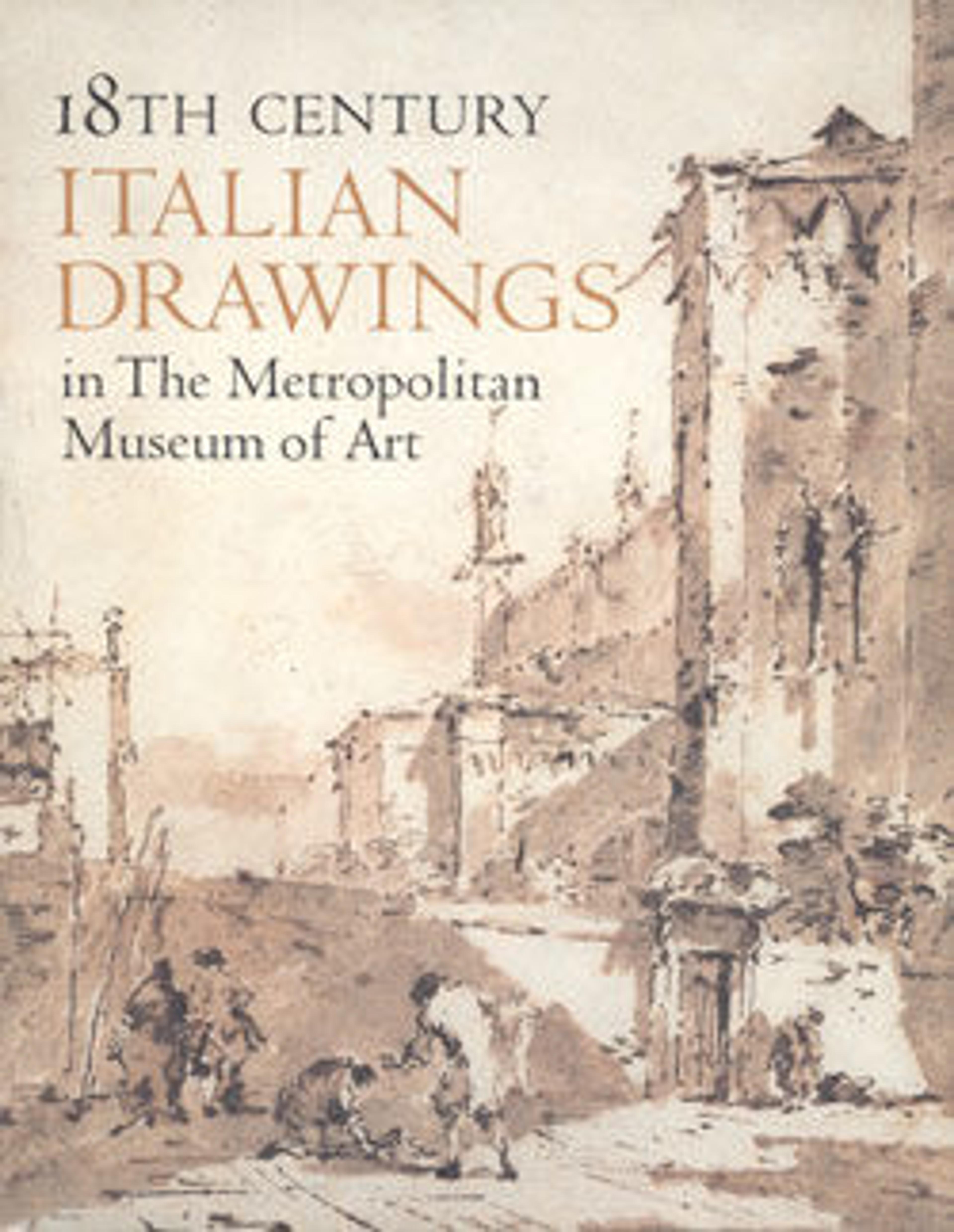The Feast of Belshazzar
The attribution of this highly modelled drawing to Antonio Gionima was made by Philip Pouncey in 1958. The subject is based on the Book of Daniel (5:1-29), which tells that Belshazzar, the king of Babylon in the 6th century B.C., held a lavish banquet, attended by his courtiers, wives, and concubines. They used the sacred vessels from the Temple of Solomon in Jerusalem to drink and toast pagan gods. Amidst the profanation, a hand appeared writing on the wall mysterious words that the prophet Daniel interpreted for the king to foretell his death and the Fall of Babylon. Inspired by Paolo Veronese's mode of composition, the artist here focused on the theatricality of the banquet scene, omitting the actual portent of the hand writing. The obscure words appear already inscribed at upper right on a building, and with a slight error in spelling. As Jacob Bean pointed out, according to the Clementine edition of the Vulgate in use in Gionima's time, the words that Prophet Daniel was called to decipher should read "MANE THECEL (rather than THETEL) PHARES," which can be loosely translated as "his knees smote one agains another." As Bean also noted, the two servants in the right foreground in the Museum's drawing appear in reverse and to the left in a similarly elaborate drawing representing the Banquet of Anthony and Cleopatra (Pinacoteca di Brera inv. 225, Milan; Roli and Sestieri, 1981, no. 85, repr.).
(Carmen C. Bambach, August 7, 2000)
(Carmen C. Bambach, August 7, 2000)
Artwork Details
- Title: The Feast of Belshazzar
- Artist: Antonio Gionima (Italian, Venice 1697–1732 Bologna)
- Date: 1697–1732
- Medium: Pen and brown ink, brush and brown wash, highlighted with white, over black chalk, on brownish paper
- Dimensions: 11-1/4 x 14-15/16 in. (28.5 x 38.0 cm)
- Classification: Drawings
- Credit Line: Gift of Cornelius Vanderbilt, 1880
- Object Number: 80.3.425
- Curatorial Department: Drawings and Prints
More Artwork
Research Resources
The Met provides unparalleled resources for research and welcomes an international community of students and scholars. The Met's Open Access API is where creators and researchers can connect to the The Met collection. Open Access data and public domain images are available for unrestricted commercial and noncommercial use without permission or fee.
To request images under copyright and other restrictions, please use this Image Request form.
Feedback
We continue to research and examine historical and cultural context for objects in The Met collection. If you have comments or questions about this object record, please complete and submit this form. The Museum looks forward to receiving your comments.
